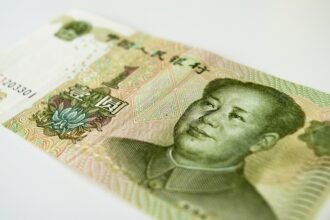The Bloomberg Asia Dollar Spot Index fell as much as 0.2% to 91.51 on Monday, the lowest level since May 9. Export-sensitive Taiwanese dollar and the South Korean won dropped the most among emerging Asian currencies.
The moves come after President Donald Trump on Friday said he would impose an additional 100% tariff on China from Nov. 1 and place export controls on critical software. That’s before he signalled openness on Sunday to a deal with China.
“Asia markets are in a risk-off mood as Trump’s threat of a 100% tariff on China rekindles concerns over a renewed escalation in US-China trade tensions,” said Lloyd Chan, a strategist at MUFG Bank Ltd.
“Currencies closely tied to China’s economic outlook and global trade, such as the won, Taiwanese dollar and Malaysian ringgit, could come under some pressure,” he said.
Beyond the trade dispute, regional currencies are also being weighed down as surprise rate cuts in Indonesia and the Philippines spur bets for similar moves in other Asian nations. Meanwhile, Federal Reserve officials are indicating caution on further rate reductions, which is boosting the dollar and adding to the downward pressure on regional peers.
Country-specific factors such as the corruption allegations facing the Philippine government and fiscal uncertainties under Indonesia’s new Finance Minister, Purbaya Yudhi Sadewa, are among other headwinds for Asian currencies.
Read Also: Here’s what triggered a 10% surge in shares of MapMyIndia-parent CE Info Systems




















